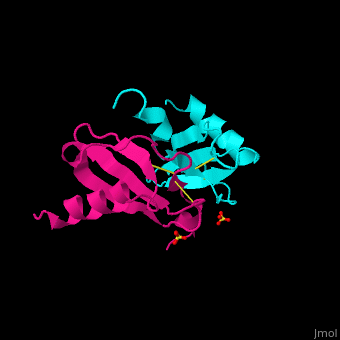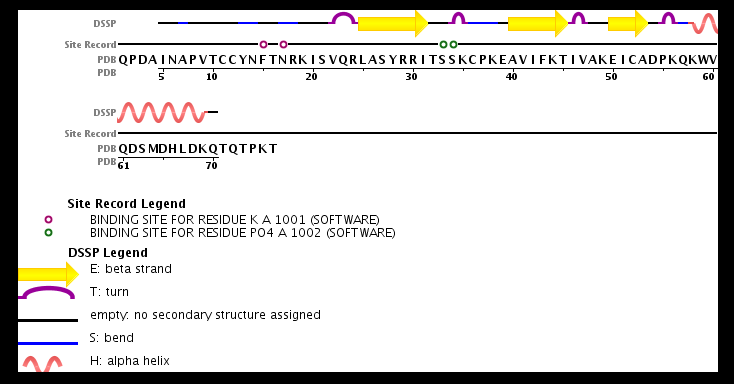Monocyte chemoattractant protein
From Proteopedia
| Line 2: | Line 2: | ||
== Function and Structure == | == Function and Structure == | ||
| - | ''' | + | Human synthetic '''monocyte chemoattractant protein 1 (MCP)''' belongs to the superfamily of chemokines, which are proteins involved in immunoregulatory and inflammatory processes. The gene for CCL2 is on chromosome 17 in region 17q11.2-q12. The superfamily can be subdivided into 4 smaller groups, depending on the N-terminal arrangement of the cysteines. The CCL2<ref>PMID:8170963</ref> is also known as '''chemokine (C-C motif) ligand''' or: |
- [[MCP1]] | - [[MCP1]] | ||
- small inducible cytokine A2 (SCYA2) | - small inducible cytokine A2 (SCYA2) | ||
Revision as of 07:17, 6 July 2023
| |||||||||||
Synthesis
The protein human CCL2 has been synthesized using a combination of solid phase peptide synthesis (SPPS) and native chemical ligation (NCL). The thioester-peptide segment was synthesized using the sulfonamide safety-catch linker and 9-fluorenylmethoxycarbonyl (Fmoc) SPPS, and pseudoproline dipeptides were used to facilitate the synthesis of both CCL2 fragments. After assembly of the full-length peptide chain by NCL, a glutathione redox buffer was used to fold and oxidize the CCL2 protein. CCL2 was crystallized and the structure was determined by X-ray diffraction at 1.9-A resolution. This is probably one of the first crystal structures of a protein prepared using the sulfonamide safety-catch linker and NCL.
3D structures of Monocyte chemoattractant protein
Updated on 06-July-2023
References
https://fr.wikipedia.org/wiki/CCL2 http://www.ebi.ac.uk/thornton-srv/databases/cgi-bin/pdbsum/GetPage.pl?pdbcode=1DOK http://www.uniprot.org/uniprot/P13500#interaction http://www.rcsb.org/pdb/explore/explore.do?structureId=3IFD
- ↑ Carr MW, Roth SJ, Luther E, Rose SS, Springer TA. Monocyte chemoattractant protein 1 acts as a T-lymphocyte chemoattractant. Proc Natl Acad Sci U S A. 1994 Apr 26;91(9):3652-6. PMID:8170963
- ↑ Ito Y, Ishiguro H, Kobayashi N, Hasumi H, Watanabe M, Yao M, Uemura H. Adipocyte-derived monocyte chemotactic protein-1 (MCP-1) promotes prostate cancer progression through the induction of MMP-2 activity. Prostate. 2015 Jul 1;75(10):1009-19. doi: 10.1002/pros.22972. Epub 2015 Apr 27. PMID:25917126 doi:http://dx.doi.org/10.1002/pros.22972
- ↑ Lubkowski J, Bujacz G, Boque L, Domaille PJ, Handel TM, Wlodawer A. The structure of MCP-1 in two crystal forms provides a rare example of variable quaternary interactions. Nat Struct Biol. 1997 Jan;4(1):64-9. PMID:8989326
Proteopedia Page Contributors and Editors (what is this?)
Coline Perrin, Alexane Caignard, Michal Harel, Alexander Berchansky, Joel L. Sussman


